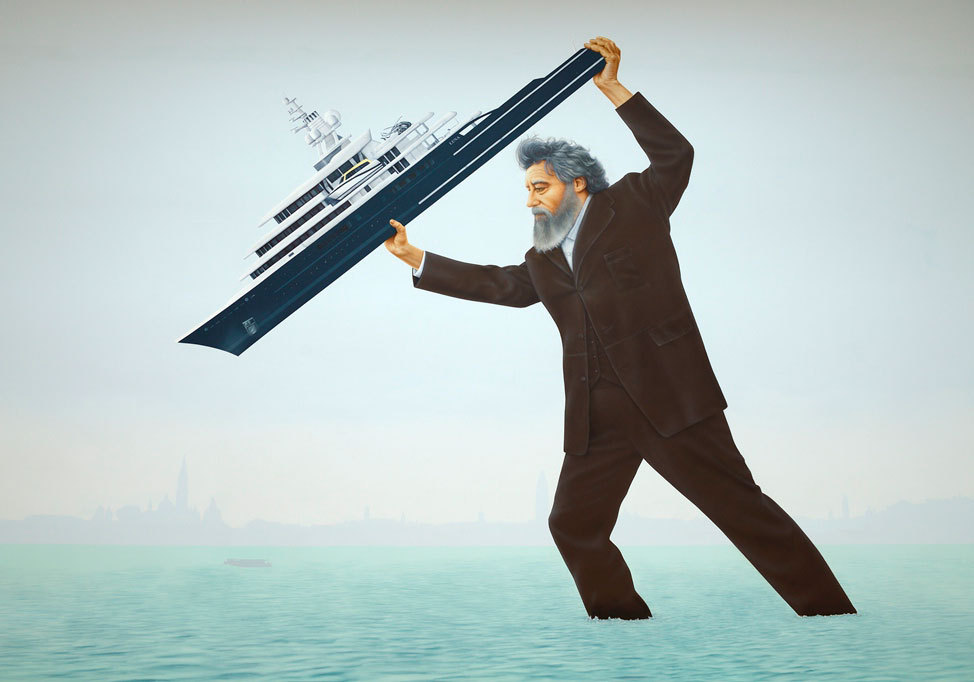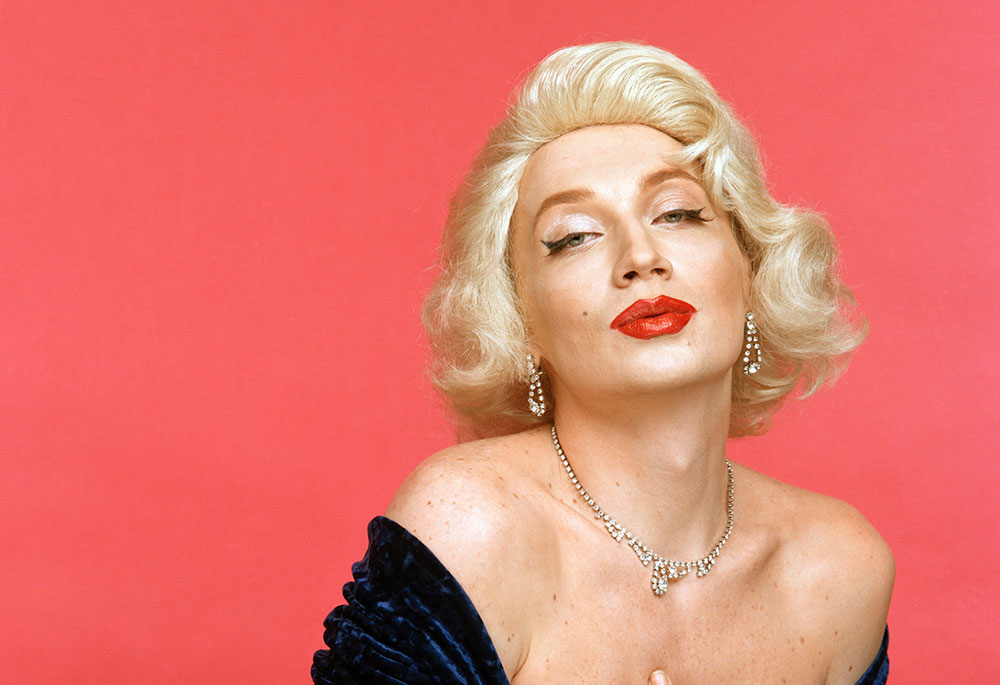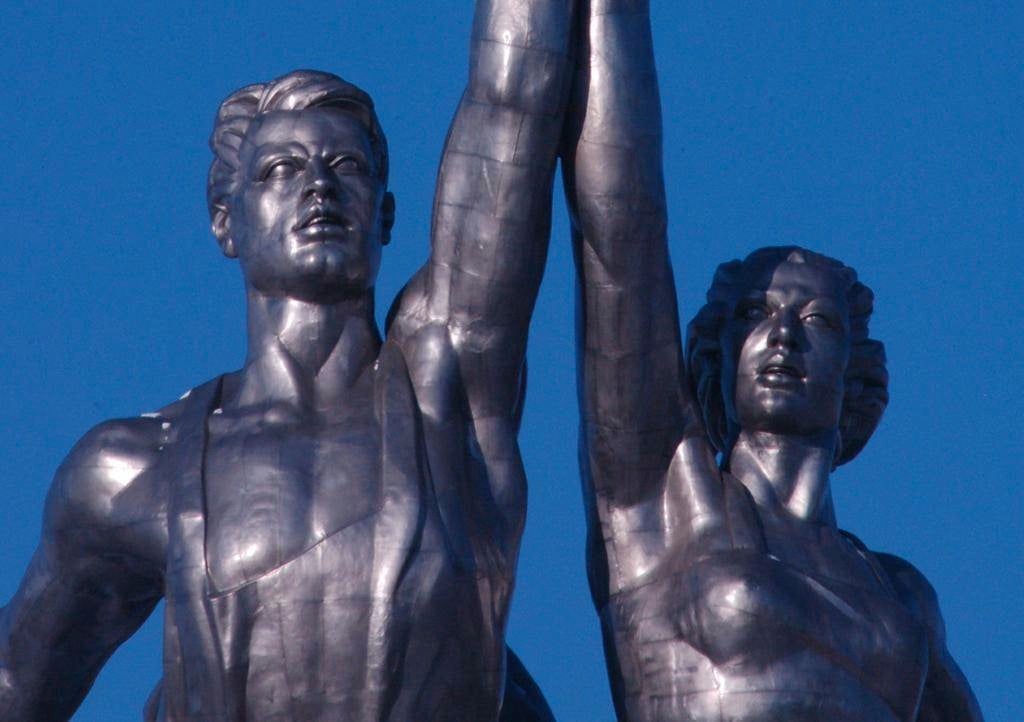Old school: art education and the rise of right-wing realism
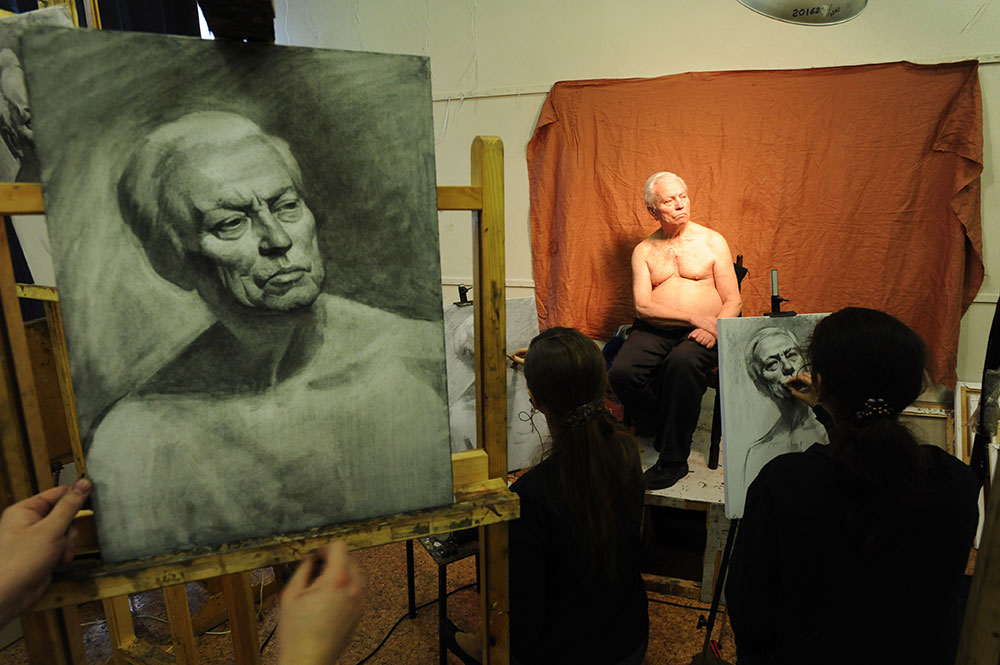
The traditional skills taught at Moscow's Glazunov Academy of Fine Arts are in high demand and, for many, a welcome antidote to the esoteric world of contemporary art. But, argues Tom Cubbin, its brand of retrograde realism is as unhistorical as it is unsettling
Going to student art shows can be a bit of a bore. Young artists taking their first steps in the world are unlikely to produce truly original work. More often what you see is a good version of something you’ve seen before. Maybe a Koons made out of jelly, or a Rothko but with glitter. This is not to say that the students are to blame. With originality being such a prevalent criterion by which art is judged, the constant need to strive to be new must be exhausting.
But at the Russian Academy of Painting, Sculpture and Architecture, founded by highly decorated realist artist Ilya Glazunov, lacking originality is exactly the point. At the academy’s open day I met students who were self-consciously avoiding doing anything new or unexpected in their work, and in so doing helping to a visual counterpart to the worrying current trend for “traditional” values.
A better English translation of the name might be something like the deliberately archaic “Ye olde schoole of painting, sculpture and manners of construction”, as the academy takes its name is taken from a forerunner which was housed in the same neoclassical mansion in central Moscow before the Bolshevik revolution of 1917. And it is more than just a name: the school was founded in order to replicate the academies of the 19th century by rigorously cultivating traditional artistic disciplines such as the study of anatomy and learning by copying.
“He would love to see the restoration of the monarchy”
Outside the academy a mutual friend introduced me to Andrei, an enthusiastic young sculptor who would guide me through an institution which is the antithesis of everything else I have experienced on Moscow’s contemporary art circuit. The inside of the building resembled a series of 19th-century salons with paintings covering the walls like a jigsaw so that no bare wall was left exposed. These rooms were connected by long, dark corridors where the best examples of the students’ work were displayed: still lives, landscapes, historical and religious paintings, icons and the odd sculpture of a medieval tsar or a poet of the 19th-century “Golden Age”. As we inspected the works, Andrei took great delight in testing me on my admittedly patchy knowledge of Russian art history. What became clear as Andrei showed me through the countless studios was that, alongside a rather impressive skill set, Glazunov is also trying to instil 19th-century values in his young followers. “He would love to see the restoration of the monarchy,” I was told; grand oil portraits of Russian emperors gazed down at us as we made our way to the assembly hall where we waited patiently for Glazunov himself to address prospective students.
Unfortunately, he kept us waiting a little too long and we had to leave. But an address to young artists can be found on the academy’s website in which Glazunov sets out his plea for a return to the nationalist values of the past: “Young artists, be worthy of yourselves and shoulder the great task of being an artist who expresses the national self-conscious of his people. The depths of the school of high realism are the depths of your soul. Be true to yourself in the arduous fight between good and evil in our 21st century. Choose free creativity, and not the slavery of passing fashions.”
Most worryingly, perhaps, is the fact that the school deliberately, and ahistorically, embraces the entire 19th century as a unified golden age of Russian art. Equal emphasis is placed on academic painting and on the work of late 19th-century realist painters such as Ilya Repin, despite the fact that Russian realism sprung into prominence during the 1860s precisely as a rebellion against the dominance of European academism, when fourteen artists refused to complete their diploma pieces and instead set up a society of travelling exhibitions, earning themselves the nickname “the Wanderers”. Their art attempted to unmask the realities of Russian life and was often valued for its sharp criticism of hypocrisy in tsarist society. I asked Andrei if it struck him as odd that these two antagonistic styles of painting should be valued equally, but he laughed and told me that it was simply the skill, and not the content of these artists’ work he and his fellow students were interested in. In making my case I pointed to what I assumed was a copy of the realist artist Vladimir Makovsky, but I was quickly corrected. “That’s an original composition,” Andrei informed me.
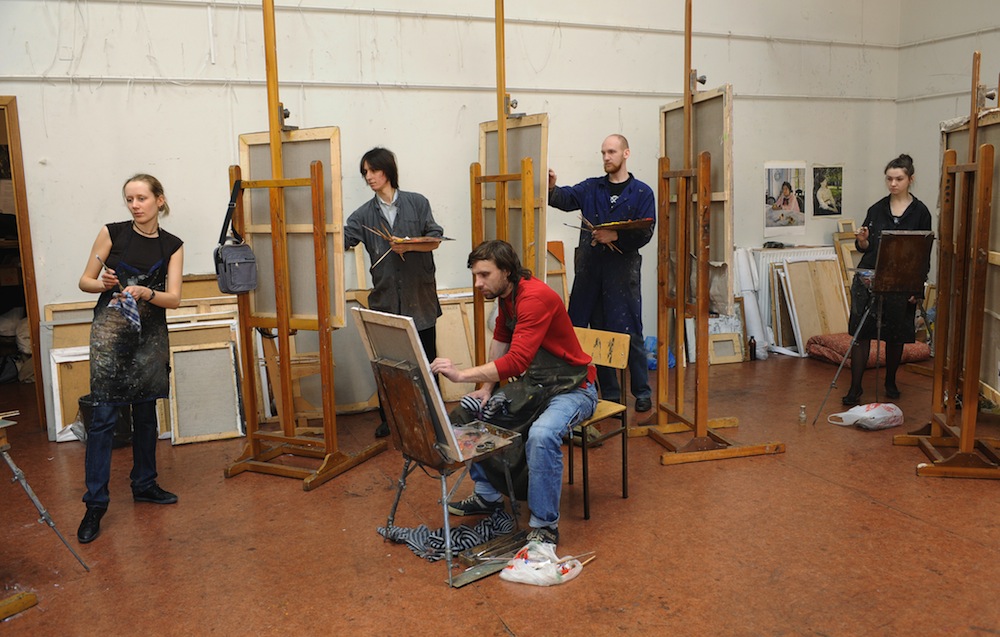
The students I met delighted in my bemused reaction to their small corner of the 19th century in central Moscow. One student showed me his diploma work — a painting of Napoleonic Wars commander General Kutuzov on horseback. Seeing the look on my face as I wondered who on earth could possibly want such a painting these days, he laughed and said, “Maybe you’ll prefer this, here is something more contemporary,” pointing to a canvas propped up on the floor below. It was an impressionist landscape.
The skill of the young artists I met was astounding, and everybody I spoke to told me that they had joined the academy because they valued the technical rigour of the tuition which is difficult to find elsewhere. There are no high-tech video installations here; computers are banished to the school’s administrative offices. The architecture faculty, where students learn how to design and restore places of worship for the increasingly powerful Orthodox Church, relies solely on hand-drawn plans.
“Glazunov’s obsession with a so-called Golden Age of Russian art glorifies centralised tsarist authority and a Slavic monoculture”
Art history is littered with revivals, but the idea of being innovative by being conservative has always struck me as somewhat disingenuous. It is one thing to borrow from the past, but another to attempt to recreate it. If the students at this heavily over-subscribed academy are there simply to learn skills, as many of them claim, the fact that it is taught in such narrowly defined categories means that their art is defined only by its own limitations. Some students I met evidently revelled in the subversiveness of their own Luddism, but such explicit opposition to what Glazunov calls “the onslaught of avant-gardism in the majority of the world’s academies” is inherently regressive. This same attitude would have put them in opposition to the blossoming of the Russian realist art that the academy’s founders so admire. Just as artists of 19th-century national revivals uncritically idealised peasant art (conveniently omitting inconveniences such as backbreaking agricultural labour, famine and disease), so Glazunov’s obsession with a so-called Golden Age of Russian art glorifies centralised tsarist authority and a Slavic monoculture. This seems to have pleased President Vladimir Putin, who is shown alongside Glazunov in several photographs hanging in the academy’s boardroom. (The boardroom was set out for a meeting when I entered: in front of Glazunov’s chair there was a bottle of Perrier, while others had to make do with distinctly down-market Bon Aqua.) While Soviet art schools produced thousands of artists proficient in the depiction of white-toothed collective farmers staring into the radiant future, Glazunov’s academy is a factory for the resurgent nationalist imagery of Putin’s Russia.
At a time when contemporary artists are increasingly coming into conflict with the state, particularly in response to recent impositions on freedom of expression exemplified by events such as the Pussy Riot affair and the introduction of new laws against so-called “homosexual propaganda”, it is important to remember that the Russian right wing continues to train its own legions of artists. The Glazunov academy’s dangerous reverence for a non-existent past is popular among businessmen and officials who are willing to part with large sums of cash in order to show their allegiance to the state by means of conspicuous consumption. As Russia attempts to reassert its own “national idea” two decades after the collapse of the multi-ethnic Soviet Union, Glazunov’s academy has the support of the government and the church in training young artists to express their Russianness visually, and earn good money in the process.

